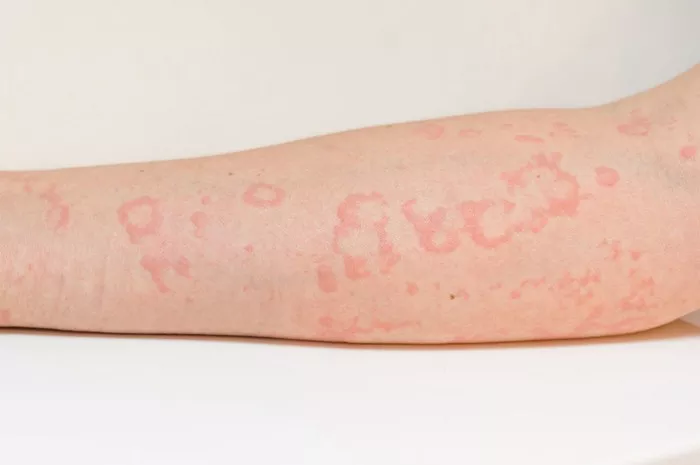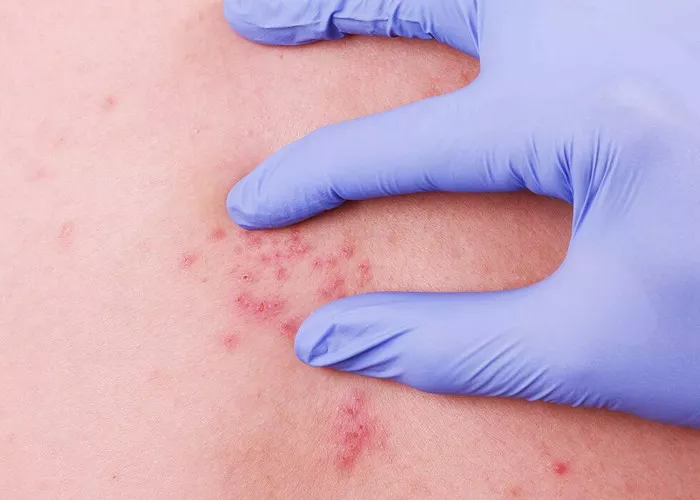Hives, medically known as urticaria, are a common dermatological condition characterized by the sudden appearance of red, itchy welts on the skin. While hives can be acute or chronic, the focus of this article is on chronic urticaria (CU), which persists for more than six weeks and can significantly impact the quality of life. The search for effective treatment options has led to the development and consideration of various therapeutic strategies, including injectable treatments. This article delves into the question: “Is there a shot for hives?” by exploring the current landscape of treatments, focusing on the role of injectable therapies.
Understanding Chronic Urticaria
Chronic urticaria affects approximately 0.5-1% of the population, with a higher prevalence in women and individuals aged 20-40 years. The condition is characterized by recurrent episodes of hives that last for six weeks or more, often accompanied by angioedema (swelling of deeper layers of the skin). The exact cause of CU is often elusive, making it a challenging condition to manage. It is believed to be an autoimmune disorder in many cases, where the body’s immune system mistakenly attacks its own tissues, leading to the release of histamine and other inflammatory mediators.
Symptoms and Impact
The primary symptom of chronic urticaria is the presence of itchy, raised welts on the skin, which can vary in size and shape. These welts may appear anywhere on the body and can change locations within hours. Angioedema, when present, typically affects areas like the eyelids, lips, and genitalia, causing discomfort and swelling.
The impact of CU extends beyond physical discomfort. Chronic itchiness and swelling can lead to sleep disturbances, emotional distress, and a reduced quality of life. Patients often report feelings of frustration, anxiety, and depression due to the unpredictability and persistence of their symptoms.
Current Treatment Options for Chronic Urticaria
The management of chronic urticaria aims to alleviate symptoms, reduce flare-ups, and improve the patient’s quality of life. Treatment strategies typically follow a stepwise approach, starting with non-pharmacological interventions and progressing to pharmacological therapies if necessary.
Non-Pharmacological Interventions
Non-pharmacological interventions are often the first line of defense in managing CU. These include:
- Avoiding Triggers: Identifying and avoiding potential triggers, such as certain foods, medications, or environmental factors, can help reduce the frequency and severity of hives.
- Lifestyle Modifications: Stress management techniques, regular exercise, and a healthy diet can contribute to overall well-being and potentially reduce CU symptoms.
- Skin Care: Using gentle, hypoallergenic skin care products and avoiding harsh chemicals can help prevent skin irritation and flare-ups.
Pharmacological Therapies
When non-pharmacological measures are insufficient, pharmacological therapies are employed. These include:
1. Antihistamines: The first line of pharmacological treatment for CU involves second-generation H1-antihistamines. These medications block histamine receptors, reducing itchiness and the formation of hives. In some cases, higher doses or combinations of antihistamines may be necessary.
2. Leukotriene Receptor Antagonists: These medications, such as montelukast, can be used in conjunction with antihistamines to provide additional relief by blocking leukotrienes, which are inflammatory mediators.
3. Corticosteroids: Short courses of oral corticosteroids may be prescribed for severe flare-ups, although long-term use is discouraged due to potential side effects.
4. Immunosuppressants: For refractory cases, immunosuppressive agents like cyclosporine may be considered, but these come with significant risks and require careful monitoring.
SEE ALSO: What Are Hives in Adults
Injectable Treatments for Chronic Urticaria
Despite the availability of various treatments, some patients with chronic urticaria do not respond adequately to conventional therapies. This has led to the exploration of injectable treatments as potential solutions. Injectable treatments can be broadly categorized into two main types: biologics and other injectable agents.
Biologic Therapies
Biologic therapies represent a significant advancement in the treatment of chronic urticaria. These medications are designed to target specific components of the immune system involved in the pathogenesis of CU. The most notable biologic therapy approved for chronic urticaria is omalizumab.
Omalizumab (Xolair)
Omalizumab is a monoclonal antibody that targets immunoglobulin E (IgE), a key player in allergic reactions and chronic urticaria. By binding to IgE, omalizumab prevents it from attaching to mast cells and basophils, thereby reducing the release of histamine and other inflammatory mediators. Omalizumab is administered as a subcutaneous injection, typically every two to four weeks.
Efficacy and Safety
Clinical trials and real-world studies have demonstrated the efficacy of omalizumab in managing chronic urticaria. Many patients experience a significant reduction in the frequency and severity of hives, as well as an improvement in quality of life. Omalizumab is generally well-tolerated, with the most common side effects being mild injection site reactions, headache, and upper respiratory infections.
Guidelines and Recommendations
The use of omalizumab for chronic urticaria is supported by various clinical guidelines. The European Academy of Allergy and Clinical Immunology (EAACI) and the American Academy of Allergy, Asthma & Immunology (AAAAI) recommend omalizumab as an add-on therapy for patients with CU who do not respond to high-dose antihistamines.
Other Injectable Agents
While omalizumab is the most well-known biologic for chronic urticaria, other injectable agents are also being explored. These include:
Ligelizumab
Ligelizumab is another anti-IgE monoclonal antibody that has shown promise in clinical trials. It is similar to omalizumab but has a higher affinity for IgE, potentially offering greater efficacy. Studies have reported significant reductions in hives and itchiness in patients treated with ligelizumab.
Dupilumab
Dupilumab is a monoclonal antibody that targets the interleukin-4 (IL-4) receptor alpha subunit, inhibiting the signaling of IL-4 and IL-13, which are involved in allergic inflammation. While primarily used for atopic dermatitis and asthma, dupilumab is being investigated for its potential benefits in chronic urticaria.
Other Emerging Therapies
Several other biologics targeting different pathways involved in chronic urticaria are under investigation. These include agents targeting cytokines like IL-5, IL-31, and IL-33, as well as inhibitors of Bruton’s tyrosine kinase (BTK), which plays a role in immune cell activation.
Practical Considerations and Future Directions
The introduction of injectable treatments, particularly biologics, has revolutionized the management of chronic urticaria. However, practical considerations and ongoing research are essential to optimize their use and explore new avenues for treatment.
Patient Selection
Identifying the right candidates for injectable treatments is crucial. These therapies are typically reserved for patients with moderate to severe chronic urticaria who do not respond adequately to conventional treatments. A thorough assessment by a specialist in allergy or dermatology is essential to determine the appropriateness of injectable therapies.
Cost and Accessibility
The cost of biologic therapies can be a significant barrier to access. Omalizumab, for example, is expensive, and insurance coverage can vary. Efforts to improve affordability and accessibility are necessary to ensure that patients who would benefit from these treatments can obtain them.
Monitoring and Safety
Regular monitoring is essential for patients receiving injectable treatments. This includes assessing the efficacy of the therapy, monitoring for side effects, and adjusting the treatment regimen as needed. Long-term safety data are still being gathered, and ongoing vigilance is required to identify any potential risks associated with prolonged use of these agents.
Future Research
The landscape of chronic urticaria treatment is continually evolving. Ongoing research is focused on identifying new therapeutic targets, improving the efficacy of existing treatments, and minimizing side effects. The development of personalized medicine approaches, where treatments are tailored to the specific characteristics of an individual’s disease, holds promise for the future.
Conclusion
Chronic urticaria is a challenging condition that can significantly impact a patient’s quality of life. While conventional treatments like antihistamines and corticosteroids are effective for many, some patients require more advanced therapies. Injectable treatments, particularly biologic therapies like omalizumab, have emerged as valuable options for managing refractory cases of chronic urticaria.
The availability of these injectable treatments has provided new hope for patients with chronic urticaria, offering significant symptom relief and improved quality of life. However, practical considerations, including cost, accessibility, and long-term safety, must be addressed to optimize their use. As research continues, the future holds promise for even more effective and personalized treatments for chronic urticaria, bringing us closer to the ultimate goal of providing lasting relief for all patients.
Related Topics:


























